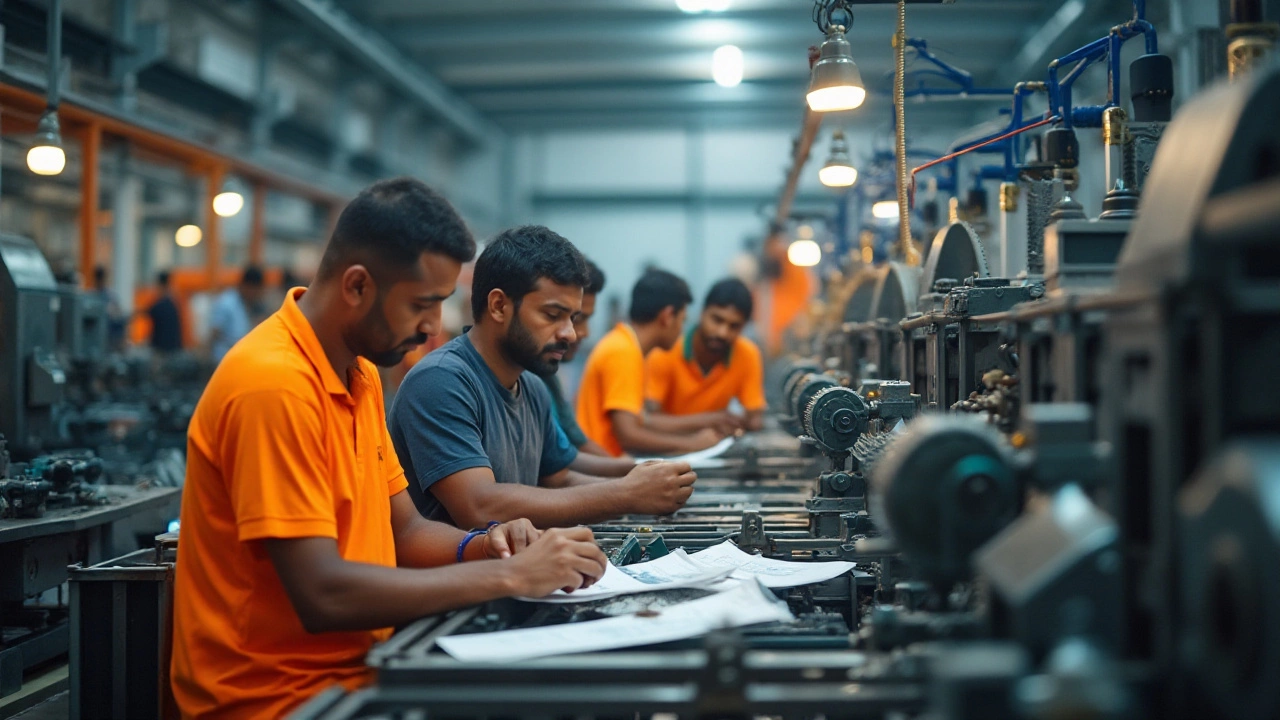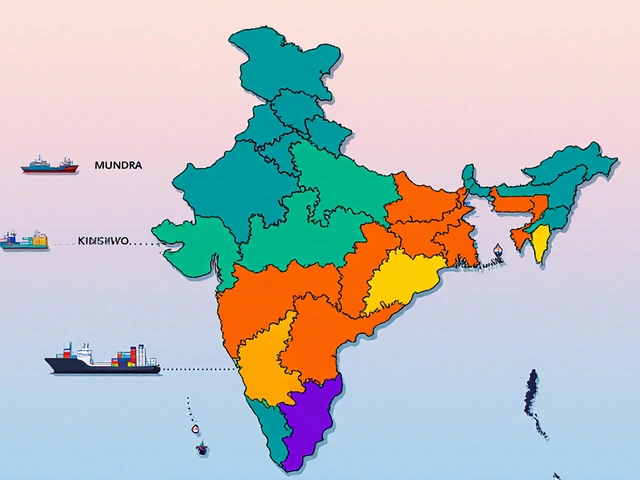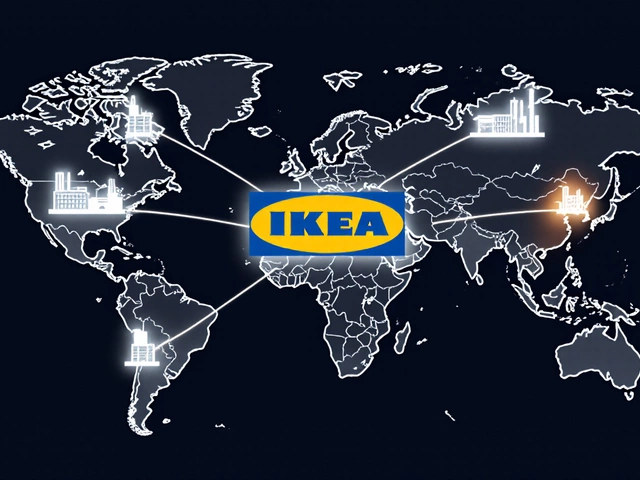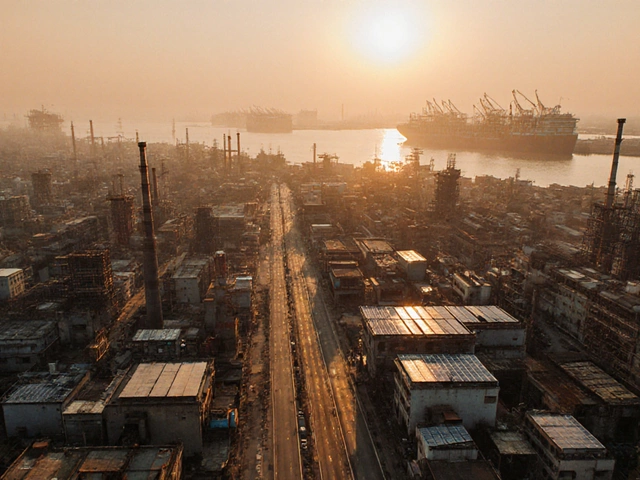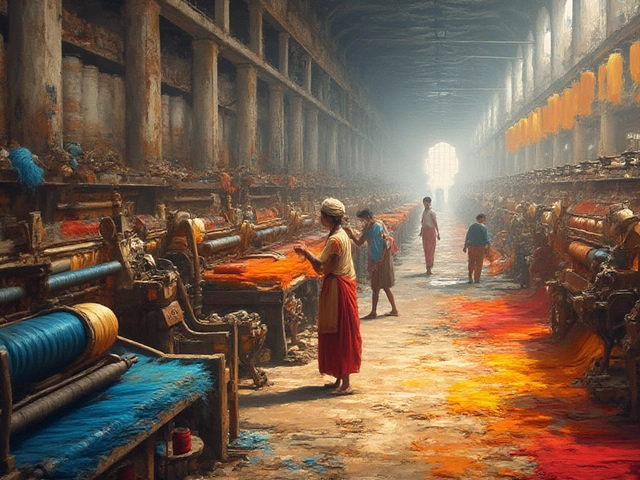The United States, with its vast industry needs, imports machinery from a multitude of countries. Notably, India has emerged as a vital partner in meeting these demands, thanks to its growing manufacturing sector and innovative technologies. Here's a look into how India has positioned itself as a significant player in supplying machinery to the US.
The Indian machinery manufacturing landscape is diverse, with companies producing everything from simple tools to high-tech equipment. With a focus on quality and cost-effectiveness, Indian manufacturers have made strides in exporting machinery across the globe, especially to the United States.
The choice to import from India is driven by a mix of economic factors, government policies, and the increasing competence of Indian companies. This relationship not only supports US industries but also fosters strong economic ties between the two nations. As we look to the future, understanding the dynamics of US imports from India sheds light on broader trends in global trade.
- India's Role in US Machinery Imports
- Major Indian Machinery Manufacturers
- Factors Driving US Imports from India
- Future Trends in Machinery Trade
India's Role in US Machinery Imports
In recent years, the role of India in facilitating machinery imports to the United States has gained remarkable traction. This growth is a testament to the increasing capability of Indian manufacturers to deliver high-quality products at competitive prices. The strategic collaboration between US and Indian companies is reshaping the global supply chain, with India emerging as an essential hub in providing impressive and diverse machinery solutions. From heavy industrial equipment to precision instruments, Indian enterprises are catering to a wide range of needs in the US market. This industrial fervor is complemented by a steadfast commitment to innovation and technological advancement across the Indian manufacturing landscape.
The Indian machinery export market, particularly to the US, reflects a broad array of sectors. These include automotive components, textile machinery, packaging equipment, and more, showcasing the dynamic expertise Indian companies have nurtured over the years. Notably, the government's supportive initiatives, combined with robust research and development investments, have fostered this healthy expansion. The "Make in India" campaign, for instance, has spurred growth in domestic production capacities and streamlined policies, further propelling exports. As an example of this collaboration's scope, India exported machinery worth over $3 billion to the US last year, making it one of the top suppliers in this segment.
Machinery from India is not only plentiful but varied. American companies have discovered that partnering with Indian manufacturers can significantly enhance their production capabilities while ensuring cost savings. The diverse manufacturing ecosystem in India is characterized by entities that range from large conglomerates to small and medium enterprises, each contributing unique products tailored for specific industrial tasks. The level of craftsmanship and quality assurance embedded in Indian manufacturing has been instrumental in attracting US companies looking for reliable sources of machinery.
According to a report by the Federation of Indian Chambers of Commerce & Industry, this bilateral trade relationship derives strength from mutual respect and recognition of each country’s conventional prowess. An observer noted, "India's steady advancement in technology integration coupled with quality manufacturing processes is what makes it a compelling choice for US businesses." This recognition underscores the strategic importance that India holds in the US machinery sector. It also highlights how the Indian manufacturing ethos, deeply rooted in innovation and adaptability, aligns perfectly with the demands and expectations of a fast-evolving global market. With the continued backing of trade policies that foster such international engagements, India’s contribution to US machinery imports looks poised to grow further.
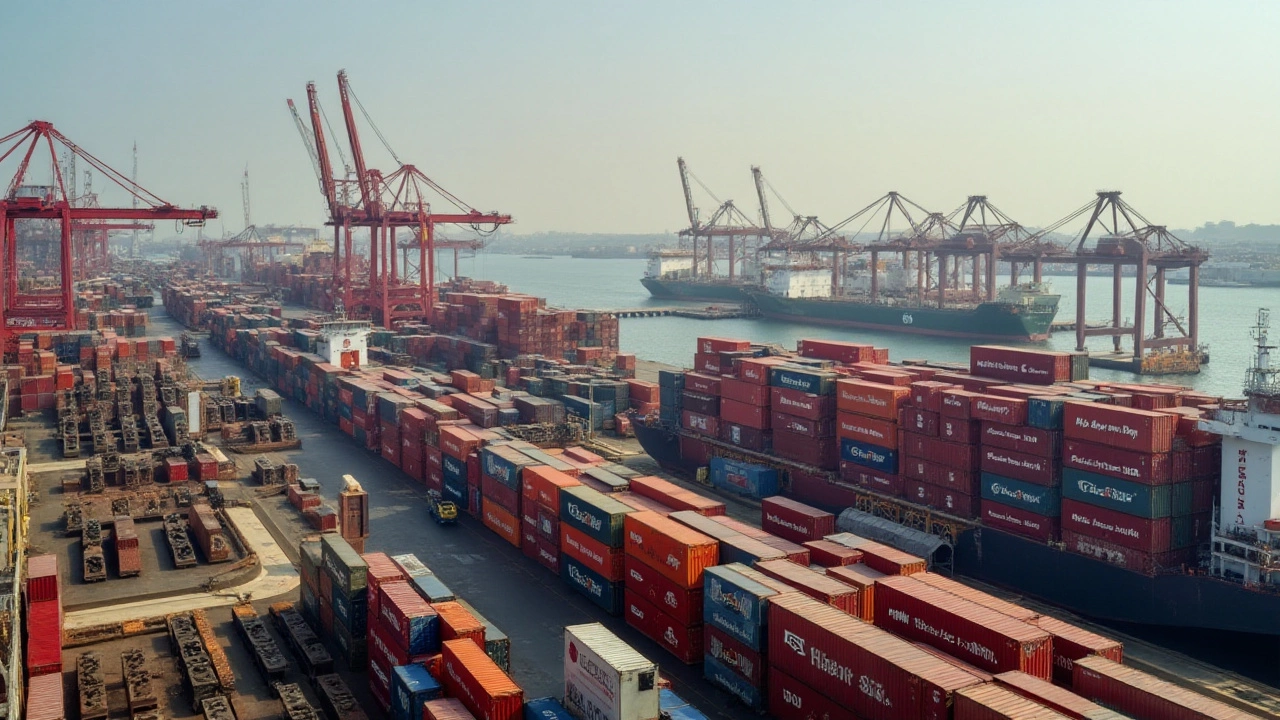
Major Indian Machinery Manufacturers
When discussing machinery manufacturers from India, several notable companies come to the forefront. These companies have not only contributed immensely to the domestic economy but have also established a significant presence internationally, notably in the United States. One such giant is Bharat Heavy Electricals Limited (BHEL), a leading producer of electronic machines and equipment. Their advanced technology and commitment to quality have made them a go-to choice for power plant equipment globally.
Larsen & Toubro, another prominent player, specializes in heavy equipment and construction machinery. They have significantly contributed to infrastructure development worldwide. With operations extending to more than 30 countries, Larsen & Toubro's versatile offerings include switching gears and thermal power stations, positioning them as a robust partner for US imports. Their expertise in engineering and construction has garnered them numerous accolades over the years.
Tata Motors and Its Global Reach
Tata Motors, known primarily for its automobiles, should not be overlooked in the machinery sector. While their vehicles run globally, Tata’s industrial machinery divisions manufacture construction equipment that aids in large-scale projects across continents. Their equipment is admired for reliability and durability, aligning well with the needs of international projects, especially those in the US.
Another strong contender is JCB India Limited, a leader in earthmoving and construction machinery. They have revolutionized the machinery landscape with state-of-the-art innovation. Known for high-performance backhoe loaders and excavators, JCB's products are a staple in both emerging and developed markets, with their machinery frequently seen on American soil.
"The Indian machinery industry has transformed the global landscape, supplying essential equipment tailored to meet international standards." - Industrial Journal 2023
The Kalyani Group, which owns Bharat Forge, is a global leader in metal forming, recognized for ensuring precision and ingenuity in manufacturing world-class machinery parts. With a presence across a vast array of industries like automotive and aerospace, Bharat Forge's exports to the United States underscore a strong bilateral trade relationship.
Additionally, Godrej & Boyce Mfg. Co. Ltd., though known broadly for its consumer goods, plays a crucial role in the machinery market segment with its precision engineering machinery. Their commitment to sustainability and innovation has helped bolster India's reputation as a top-tier machinery supplier worldwide. As we consider these companies and their global strategies, it becomes clear how India has carved a niche for itself within the international machinery supply chain.

Factors Driving US Imports from India
There exists a multitude of factors contributing to the burgeoning relationship in machinery trade between the United States and India. Central to this is India's evolution as a machinery powerhouse, effectively catering to the evolving needs of the US industry. First and foremost, the economic efficiencies offered by Indian manufacturers have played a vital role. The combination of a skilled but cost-effective labor force allows Indian machinery to be priced competitively, making it an attractive option for US importers. This cost advantage is often complemented by robust production capabilities supported by ongoing investments in technology and infrastructure, setting Indian machinery apart as highly appealing to the US market.
In addition, governmental policies between both nations have facilitated smoother trade operations. Trade agreements and collaborations emphasize reduced tariffs and favorable trade terms, which are pivotal in encouraging US companies to seek out Indian machinery suppliers. The Indian government's proactive stance, aiming to boost exports, aligns perfectly with the increasing demand for such imports in America. Incentives and export schemes ensure that Indian manufacturers can tap into growth opportunities without significant barriers. As business-friendly policies take center stage, Indian machinery manufacturers find themselves with the competitive edge necessary to expand their reach across the globe.
The quality and diversity of the machinery produced in India are noteworthy factors as well. Indian manufacturers are adept at creating a broad range of equipment, from advanced machinery used in automotive factories to essential construction tools. This diversity not only meets the varied requirements of US industries but also ensures a degree of flexibility and adaptability that other markets may lack. Couple this with the continuous pursuit of excellence and rigorous adherence to international quality standards, and it's clear why American businesses prefer to engage with Indian suppliers.
Moreover, there's an existing complementarity between the manufacturing practices and technical advancements seen in India and those preferred by American industries. As noted by a respected industry analyst,
"India has managed to strike a balance between innovation and tradition, ensuring its machinery is both cutting-edge and grounded in time-tested methodologies."This compatibility means that when US industries import machinery from India, they're integrating into processes that seamlessly blend with existing manufacturing setups. Such alignment reduces friction and accelerates machinery adoption, thereby enhancing productivity without the need for extensive modifications or additional investments.
Lastly, market dynamics and international economic trends significantly favor the importing of machinery from India. As India continues its trajectory towards being a global trade hub, the strategic geographical positioning aids in reducing shipment times and costs, further boosting its appeal. Importers in the United States find India's surge as a reliable and efficient partner in their supply chain hard to overlook. Additionally, with a looming expectation for sustainability and eco-friendliness in industrial operations, Indian companies are pivoting towards greener production methodologies, which resonates with the values held by many US corporations today. This green shift not only improves the appeal of Indian machinery but also matches the environmental aspirations of US stakeholders, catalyzing the import process even more.
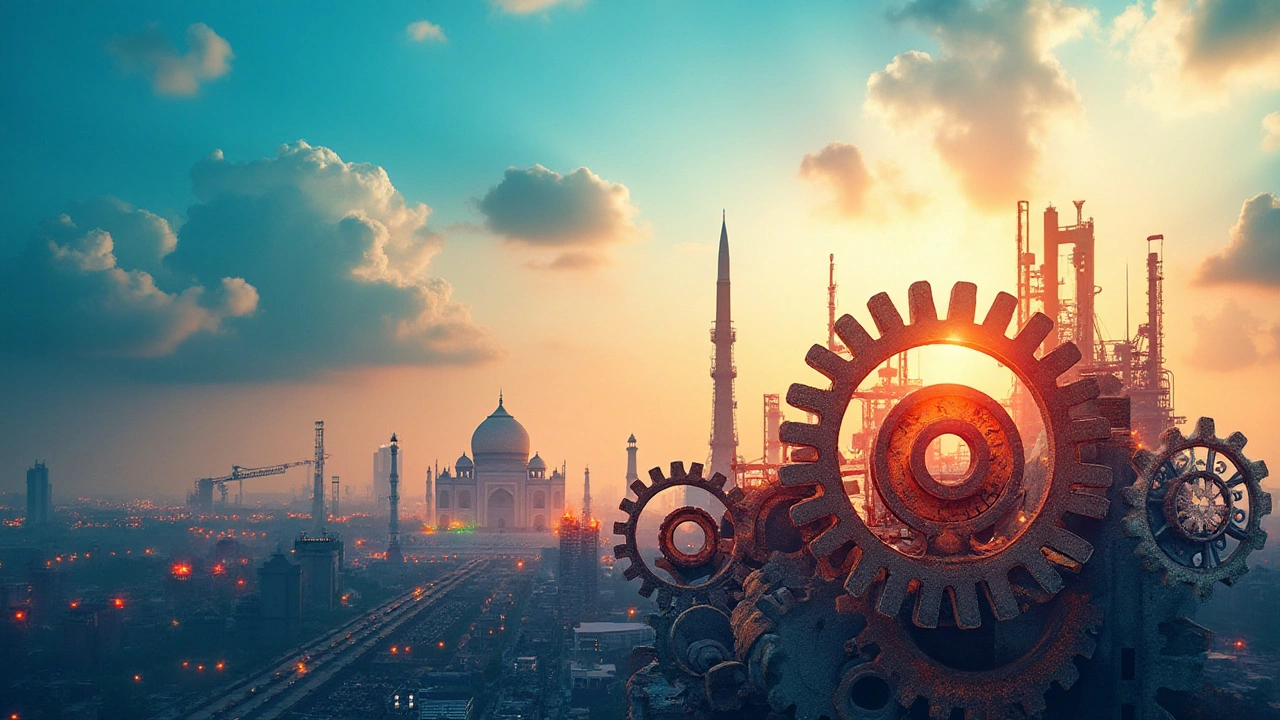
Future Trends in Machinery Trade
The landscape of machinery trade between the US and India is evolving with advancements in technology and shifts in economic strategies by both nations. As we look ahead, several trends stand out that promise to shape the future of this crucial exchange. With the rapid growth of automation and AI, Indian manufacturers are increasingly tailoring their machinery to meet the high-tech demands of US industries. This adaptation is not just about innovation; it ensures that Indian suppliers remain competitive as the US market continues to evolve at a pace driven by digital transformations.
India's commitment to developing smart manufacturing techniques is becoming a significant factor. The introduction of IoT (Internet of Things) in machinery production is one such innovation, creating equipment that can optimize efficiency and function autonomously. As such, US companies are showing greater interest in machinery that can enhance productivity while reducing operational costs. This intersection of technology and manufacturing not only strengthens trade relations but sets the stage for a future where efficient machinery is central to industrial progress.
Environmental sustainability is another trend with considerable impact. As global awareness about climate change increases, eco-friendly machinery is becoming more desirable. Indian manufacturers are responding to this demand by integrating sustainable practices and materials in their production lines. The US industry finds value in machinery that adheres to green standards, aligning with corporate social responsibility goals and consumer expectations alike. This growing commitment to sustainability signals a positive shift, appealing to businesses looking to minimize their carbon footprint.
Another potential trend reshaping the machinery trade involves economic collaborations and policy frameworks. Trade agreements and partnerships between the US and India could open new doors, allowing for easier access to markets and reduced tariffs on specific machinery categories.
As noted by a spokesperson from the US Chamber of Commerce, "Strengthened trade policies and bilateral agreements could double our machinery imports from India in the next decade if both governments take proactive measures." This highlights the importance of diplomatic and economic strategies in nurturing the trade relationship.
In addition, there's a growing emphasis on customization. US companies are increasingly seeking machinery that can be tailored to address specific needs and integrate seamlessly with existing systems. Indian manufacturers are in a prime position to deliver on this front, given their expertise in bespoke manufacturing processes. As automation and interconnectivity between machines become the norm, customization is a trend likely to accelerate further, cementing the role of Indian manufacturers in the global machinery market.
These emerging trends are creating vast potential and opportunities not just for Indian suppliers but also for US companies looking to leverage advanced and sustainable machinery technologies. As the machinery trade continues to evolve, these factors will undoubtedly play a crucial role in defining the future dynamics between these two economically vibrant nations.
